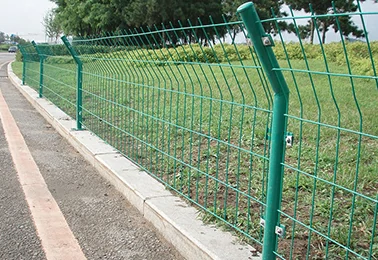 TEL:
+86-13102802206
TEL:
+86-13102802206
 Email:
fencenetting@china.com
Email:
fencenetting@china.com
 Language
Language
 TEL:
+86-13102802206
TEL:
+86-13102802206
 Email:
fencenetting@china.com
Email:
fencenetting@china.com
 Language
Language


The Significance of Metal Barbed Wire in Modern Security
Barbed wire, a formidable barrier initially designed for agricultural use, has evolved significantly to become a crucial component in various security applications around the globe. Composed primarily of metal, barbed wire is characterized by its sharp barbs or points set at intervals along the strands. This simple yet effective design serves as a deterrent against unauthorized access and plays an essential role in protecting properties, livestock, and even military establishments.
Historically, barbed wire made its debut in the late 19th century, revolutionizing land enclosure in the United States. It provided farmers with a cost-effective way to contain livestock and delineate property boundaries, replacing traditional wooden fencing methods. However, by the 20th century, the use of barbed wire expanded beyond agriculture. Its deployment along borders and military installations marked a new chapter in security measures, especially during times of conflict.
Metal barbed wire is manufactured in various configurations, but it typically consists of steel or other durable alloys designed to withstand various environmental conditions. This resilience allows it to serve as an effective deterrent in diverse climates, from arid deserts to humid tropical regions. The sharp barbs make it exceedingly difficult for intruders to breach the barrier without sustaining injuries, thereby amplifying its deterrent effect.
One of the key advantages of using metal barbed wire is its low maintenance cost compared to other security measures. While electronic fencing and surveillance systems may provide advanced security, they also incur higher installation and maintenance expenses. In contrast, barbed wire is relatively inexpensive to install and maintain, making it an appealing option for many property owners, especially in rural areas.

Beyond its economic benefits, metal barbed wire is also an environmentally friendly option. Unlike electrified fences, which can pose risks to wildlife, barbed wire presents a physical barrier without the potential hazards associated with electricity. Additionally, it is manufactured from recyclable materials, contributing to a more sustainable approach to security.
In today’s world, the uses of metal barbed wire extend into various sectors, including residential, commercial, and industrial areas. Homeowners seeking to enhance their property security often opt for barbed wire fencing to deter trespassers. Similarly, businesses and factories use barbed wire as a protective measure around their perimeters to safeguard valuable assets from theft and vandalism.
Barbed wire's applicability is notably evident in correctional facilities and military operations, where security needs are of utmost concern. Ideally situated atop prison walls or military fences, barbed wire offers an added layer of defense against escapes and unauthorized infiltrations. It acts not only as a physical barrier but also as a psychological deterrent, discouraging would-be intruders from approaching.
As global security concerns continue to evolve, so will the technology and methods associated with ensuring safety. While sophisticated security systems are on the rise, the reliability and effectiveness of metal barbed wire cannot be overlooked. It remains a practical solution for numerous applications, balancing cost, functionality, and environmental considerations.
In conclusion, metal barbed wire is more than just a practical fencing solution; it is a symbol of security and protection. Its historical significance combined with its modern applications demonstrates its enduring relevance in a world that demands both safety and efficiency. Whether in a serene countryside or bustling urban landscape, metal barbed wire serves as an indispensable tool in the ever-pressing need for security, safeguarding lives and properties alike.